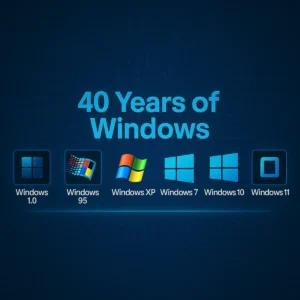On November 18, 2025, Cloudflare, one of the most widely...
Read More
Keeping your Mac up to date is essential for security, performance, and accessing the latest features.
While most users rely on the graphical Software Update interface, many power users and IT admins prefer to install macOS updates via terminal for greater control and automation.
This 2025 guide walks you through the process which is perfect for both beginners and experienced Mac users who want to streamline system updates with just a few commands.
Why Use Terminal to Update macOS?
Speed and Automation: Automate updates or run them on multiple Macs remotely.
Control: Update individual packages or the entire system with precision.
Scripting: Integrate updates into setup scripts for new machines or enterprise fleets.
Remote Management: Update headless Macs or Macs without easy access to the GUI.
Prerequisites
An internet connection.
Administrator access to your Mac.
Terminal app (found in Applications > Utilities).
Step by Step Guide: How to Install macOS Updates via Terminal
1. Open Terminal
You can launch Terminal from Applications → Utilities or by searching “Terminal” in Spotlight.
2. Check for Available Updates
Type the following command and press Enter:
This will list all available software updates for your system.
softwareupdate -lThis will list all available software updates for your system.
3. Install All Available Updates
To install all available updates, use:
softwareupdate -iasudogrants administrative privileges.-istands for install.-ameans all updates.
You’ll be prompted to enter your administrator password.
4. Install a Specific Update
If you want to install a particular update (for example, a macOS security update), first list available updates:
softwareupdate -lThen copy the name of the update you want (for example, “macOS Sonoma 14.5-23F79”), and run:
sudo softwareupdate -i "macOS Sonoma 14.5-23F79"5. Restart Your Mac (If Needed)
Some updates require a restart. You can do this from the Apple menu, or with:
sudo shutdown -r now6. Additional Useful Flags
–background: Download updates in the background.
–ignore <update>: Ignore a specific update.
–help: Get more options and help.
Example:
softwareupdate --helpTroubleshooting Common Issues
Command Not Found: Ensure you are using macOS 10.14 (Mojave) or later, as older systems may use different update mechanisms.
Permission Denied: Prefix commands with
sudoand enter your admin password.No Updates Available: Your Mac might already be up to date, or your model may not support the latest macOS version.
Automating Updates with a Script
For power users or IT admins, you can create a simple shell script to automate regular updates:
Start your script with:
softwareupdate -ia
sudo shutdown -r nowSave your script as update_mac.sh, make it executable with chmod +x update_mac.sh, and run it as needed.
Conclusion
Installing macOS updates via terminal is a fast, efficient, and scriptable way to keep your Mac secure and up to date. Whether you’re managing a single machine or hundreds in an enterprise, these commands put you in control of the update process in 2025 and beyond.
Intel P-Cores vs E-Cores: What They Are and Why They Matter in Modern CPUs
Intel’s recent generations of desktop and mobile CPUs use a...
Read MoreUnderstanding the Mixpanel–OpenAI Incident: What Really Happened and What It Means for Your Security in 2025
On January 25, 2025, OpenAI published a post addressing a...
Read MoreWindows Turns 40: The Best & Worst Moments That Shaped Its Legacy
Microsoft Windows has officially turned 40 years old, marking four...
Read More



1 reply on “How to Install macOS Updates via Terminal and Command Line: The 2025 Complete Guide”
[…] Install macOS Updates via Terminal: A Complete Guide – Eagle Eye Technology on The Trust Deficit: Can AI-Powered Performance Tracking Truly Empower Employees? […]